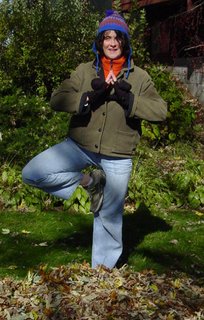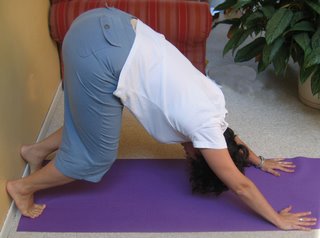The return trip from New Harbor, Maine (the reason for my recent silence) this past weekend was surprisingly easy, considering everything you hear about air travel these days. We were flying Sunday morning, so the airport was empty; a quick baggage check-in, no lines at security, and empty gates to run three-year-olds around. However, this was not a painless trip. During the aforementioned running, Eamonn (the aforementioned three-year-old) lost track of his security blanket--a fact neither of his parents realized until it was time to board the plane.
"Where's Wink?" is a common refrain in our house, as a quick search commences to find the ratty, grey fabric square that used to be a scarf. It is usually behind a chair in the living room, or under a stool in the kitchen, but it was always found and snatched up by E, to be stroked by his un-sucked hand. Well, not anymore. We frantically searched the concourse and restrooms, looked under chairs and around service desks, but Wink remained unfound. We were the last people to board the plane, with stricken looks on all our faces, as the realization set in that Wink was staying at Boston's Logan International.
Eamonn has been surprising stoic during all of this. He was a bit sad when we landed in Chicago and no one stepped forward with the blanket (as we were taking off, he suggested that some one "might find my Winkie and bring it on the plane for us"). He mentions Wink daily, and how we are "sad, but not crying" that Wink was lost. But, he has transfered his routine to a couple of back-up blankets he used in day care and they seem to be enough at night, or when he's being read to. Wow, what a cool practicer of vairagya (non-attachment).
I, on the other hand, am taking this a lot harder. The idea of that powerful little scrap of fabric, wadded up in the bottom of a trash bag with half-eaten doughnuts, soaking up tossed-out Starbucks is more than I can bear. I guess it's a symbol of E's child/babyhood that I'm not ready to see go, yet. So many little rituals surrounded that blanket, that I get sick to my stomach thinking they are a thing of the past. And yet, Eamonn has accepted Wink's disappearance and has moved on.
So I'm trying to let Wink go...I have a sappy movie montage going through my head of various Wink moments that makes me wistful (playing peek-a-boo with Alec, playing keep-away with his grandfather, carrying Hot Wheels around in it, balling it up under his head while watching TV)...but, I guess it's not really my blanket to mourn. As usual, the child becomes the guru. His ability to self-soothe is transferable; if you can't be with the one you love, love the one you're with. It's not the blanket, itself, that matters; it's being able to calm and comfort yourself with what you have at hand.
However, I found a strand of Wink this morning under the dresser (Wink's fringe was constantly shedding) that I might bag up and stick in a scrapbook. Eamonn has detached, but I'm still clinging...

 I looked back to an old post I wrote about the mechanics of Triangle. I'm guessing the extreme opening of the thighs and hips that happens in Pigeon, translates to a much looser pelvis area. This means you can keep the thighs rolled out more easily, while tipping the pelvis and torso to the side more deeply in Trikonasana. Who knew.
I looked back to an old post I wrote about the mechanics of Triangle. I'm guessing the extreme opening of the thighs and hips that happens in Pigeon, translates to a much looser pelvis area. This means you can keep the thighs rolled out more easily, while tipping the pelvis and torso to the side more deeply in Trikonasana. Who knew.


















